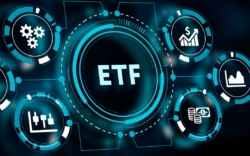1. For Direct Business Investments, Look at the IRR
The IRR, or Internal Rate of Return, is a useful measurement for angel investors, venture capitalists, and anyone else deploying capital into business ventures. The idea is that initial investment is made. Then, over a 5-year investment horizon, for example, different monetary amounts are paid out until the final payment at end of year five. A calculation must be made after the final payment to determine the relative success or failure as an investment.
The IRR is designed to calculate how well an investment performed but it’s only one way to measure it. The IRR data can confirm the percentage return information, along with the gross return (the sum of the payments ignoring any return of capital) and the net cash flow. Beyond this information, investors need to compare results to their initial expectations. This helps to examine their previous investment decision-making and to guide future investment decisions down the road.
2. For REITs, Dig into the FFO
Real estate investment trusts (REITs) allow you to buy large swathes of real estate by acquiring shares in a REIT. Instead of purchasing a REIT index fund or an actively managed vehicle, it’s possible to buy into a REIT just like with shares of a company. When assessing a prospective REIT, dig into their financials, read several past annual reports and disclosures, and check on recent news reports too. When examining their numbers, the Funds from Operations (FFO) is an important factor. Broadly speaking, it confirms the cash-flow from the real estate, excluding charges for depreciation and some other costs.
Also, another metric to consider is their growth on “like-for-like” properties. For a retail REIT, that allows you to compare what they owned last year, and this year that’s the same. It helps to provide a clear picture of how well they did.
3. For Funds & ETFs, Examine All the Expenses
Mutual funds and ETFs can have multiple layers of fees for their management. Rarely is that a single expense ratio unless they keep it quite simple.The total expense ratio is the main number to look at. For instance, while the average actively managed mutual fund expense ratio hovers around 1%, index funds are cheap. ETFs can be more or less expensive depending on the fund. So, don’t assume they’ll be cheaper to own because they need to be traded too.
Also, sales ratios described as “loads” on actively managed funds strip away 3% or more of what you have to invest. That bleeds away your hard-earned money without any reward for doing so. Avoid sales loads at all costs.
4. For Investment Selection, Know Your Time Horizon
Some investments are designed to cover your kid’s college expenses. So, they can be invested for over a decade but not more than two. With retirement expenses, it depends on both when you plan to retire and how many years away that is. When thinking about your time horizon, consider how much of a setback would be experienced if you got within 5 years of it and the market fell off a cliff. Some recover in a year or two, but others do not. It could seriously mess up your plans. So, temper the riskiness of your investments based on risk tolerance and recoverability.
5. For Peace of Mind, Consider Your Risk Tolerance
To have profitable investments, it is necessary to ride markets up and sometimes way down too. When markets decline, it tests the patience and risk tolerance of many investors. Some people never thought their investments could decline so much and got blindsided. While investing in high-return, high-risk strategies like emerging markets, managed futures, or farmland that can bear fruit, they often have sustained periods of negative or low returns. This whipsaw effect can be too much and see investors sell out at the bottom. As such, even investments with a prospect of good returns over the long-term fail to deliver that for investors because they panicked. Don’t think it won’t happen to you.
To avoid this possibility and enjoy peace of mind with your portfolio, know your risk tolerance early on. Think about how you’d feel if your portfolio declined by 50% and stayed at the level for a decade. Would it scupper college fund investments or retirement dreams?
Investments should be chosen carefully while considering all the facts. Investment factsheets are glossy and attractive but don’t get sucked in. Know what you need to achieve and how much to invest each month at an acceptable level of risk to get there. That puts you in the driving seat.







